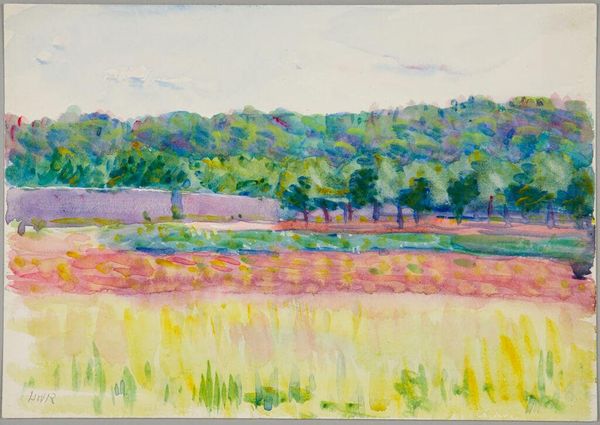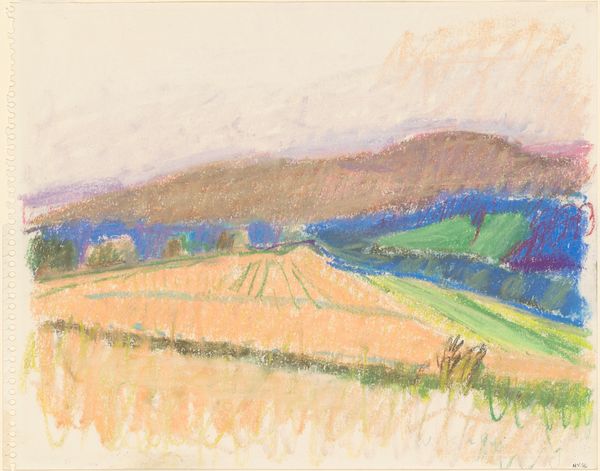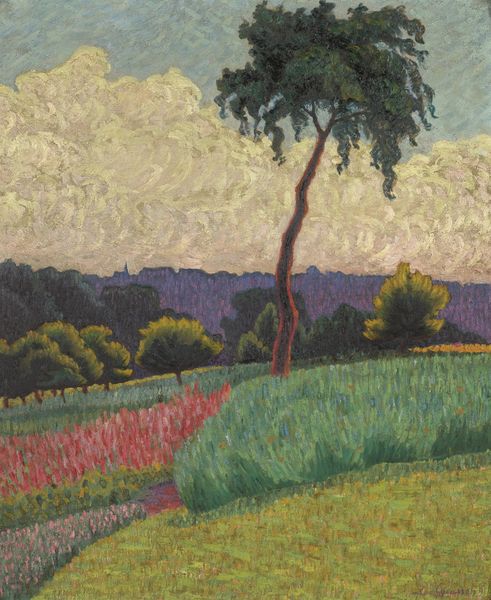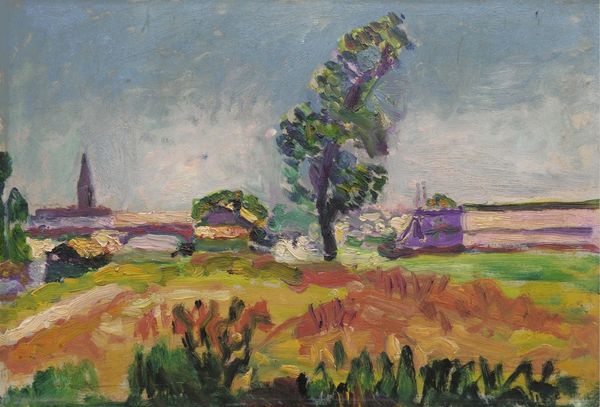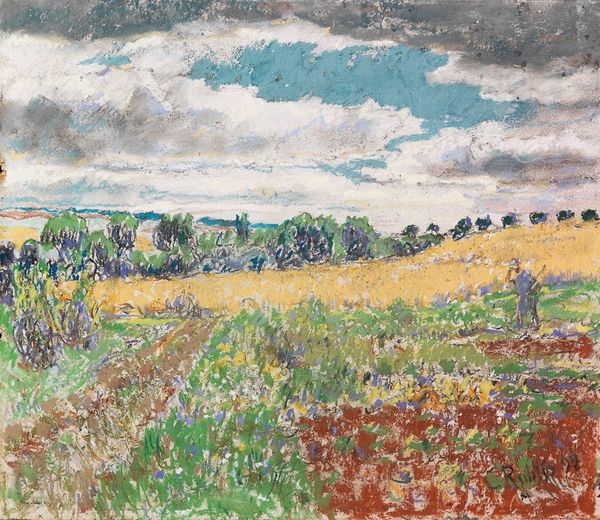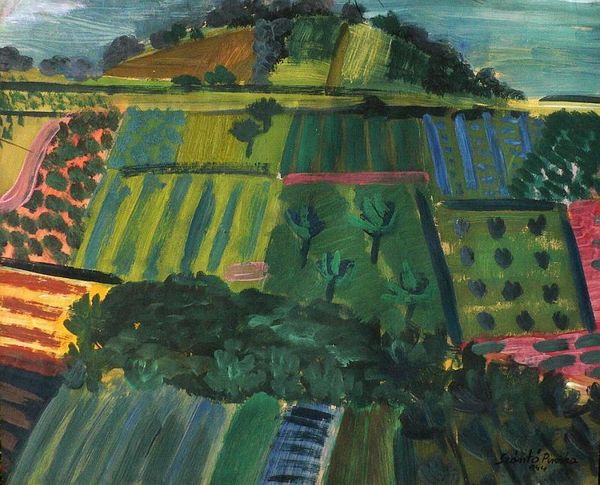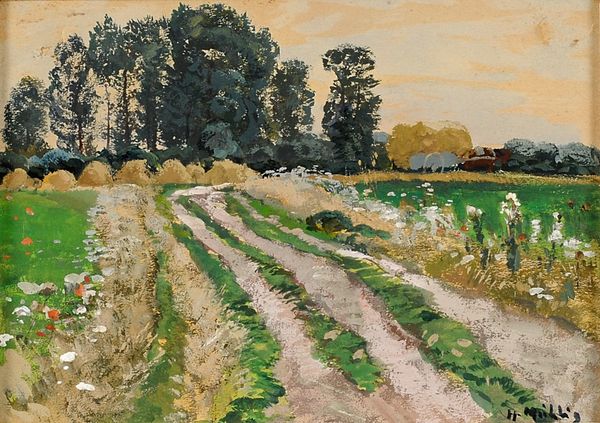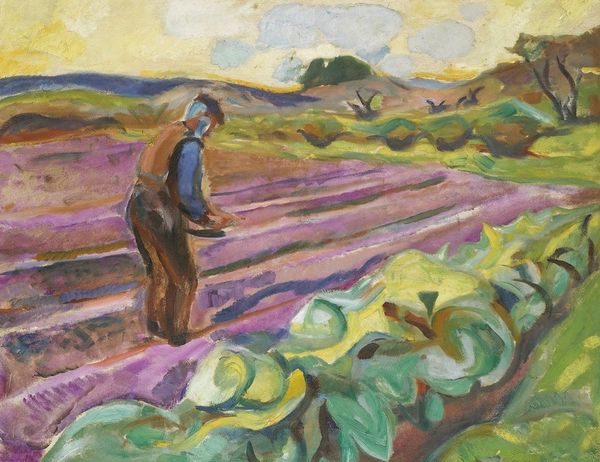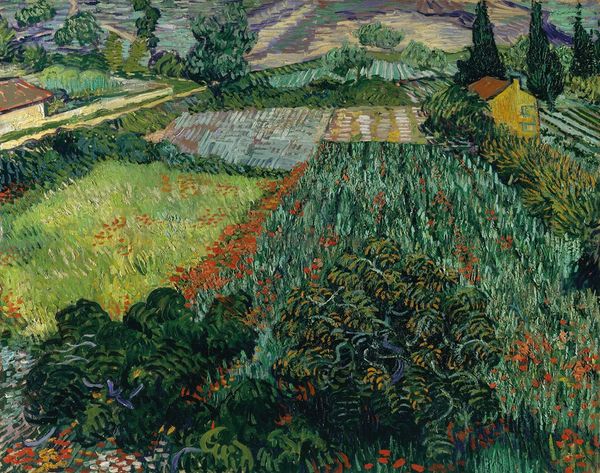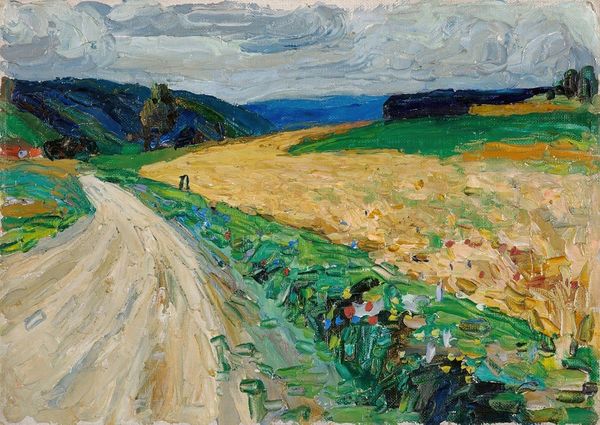
Copyright: Public Domain: Artvee
Editor: We're looking at Edvard Munch's "Cabbage Field," painted in 1915. It's an oil painting, and I'm struck by how vibrant the colours are. The whole scene shimmers, and I find it a little disorienting. What do you see in this piece? Curator: What I find fascinating here is how Munch, known for his explorations of psychological turmoil, approaches a seemingly simple subject like a cabbage field. Instead of a straightforward landscape, he gives us a visceral experience of nature mediated through the lens of personal expression and anxieties swirling around in Europe at the time. Look at how the brushstrokes themselves seem agitated. Editor: Yes, they’re so loose and thick! It’s almost aggressive. Does that relate to the context you mentioned? Curator: Absolutely. Consider the historical moment: 1915. World War I was raging. Expressionism as a movement was grappling with feelings of alienation, social unease, and the rapidly changing modern world. While not explicitly a war scene, the turbulent brushwork and the slightly unsettling colour palette could be interpreted as a reflection of the anxiety and chaos permeating society. Do you notice how the repetitive rows of cabbages might be suggestive of the masses or even graves? Editor: I see what you mean. They seem almost claustrophobic now. The perspective definitely adds to that feeling. Curator: Exactly. This work becomes a powerful statement about the individual’s relationship to a world teetering on the brink, masked by a seemingly bucolic scene. Editor: So it's not just a cabbage field, it's a commentary on society. I wouldn't have seen that without considering the historical context. Thanks! Curator: Precisely! By situating the artwork within its socio-political context, we begin to see how art can function as both reflection and critique, sparking meaningful dialogue about our own relationship to history.
Comments
No comments
Be the first to comment and join the conversation on the ultimate creative platform.

